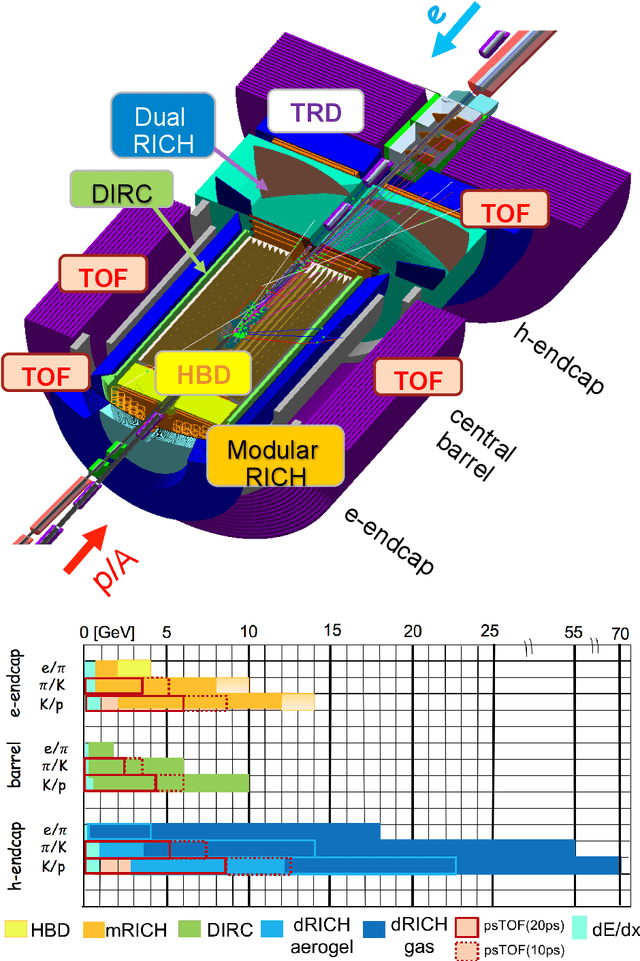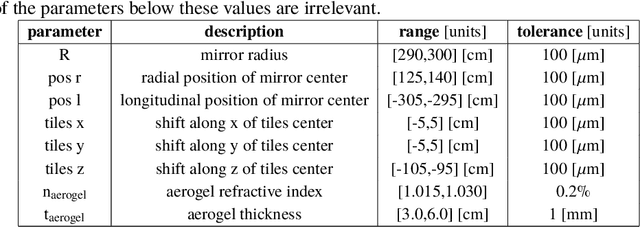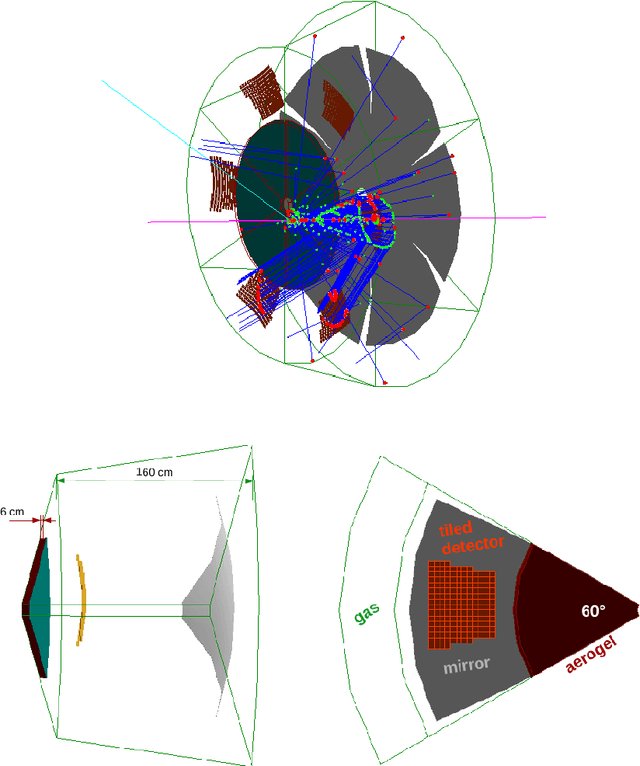V. Berdnikov
AI-assisted Optimization of the ECCE Tracking System at the Electron Ion Collider
May 20, 2022Abstract:The Electron-Ion Collider (EIC) is a cutting-edge accelerator facility that will study the nature of the "glue" that binds the building blocks of the visible matter in the universe. The proposed experiment will be realized at Brookhaven National Laboratory in approximately 10 years from now, with detector design and R&D currently ongoing. Notably, EIC is one of the first large-scale facilities to leverage Artificial Intelligence (AI) already starting from the design and R&D phases. The EIC Comprehensive Chromodynamics Experiment (ECCE) is a consortium that proposed a detector design based on a 1.5T solenoid. The EIC detector proposal review concluded that the ECCE design will serve as the reference design for an EIC detector. Herein we describe a comprehensive optimization of the ECCE tracker using AI. The work required a complex parametrization of the simulated detector system. Our approach dealt with an optimization problem in a multidimensional design space driven by multiple objectives that encode the detector performance, while satisfying several mechanical constraints. We describe our strategy and show results obtained for the ECCE tracking system. The AI-assisted design is agnostic to the simulation framework and can be extended to other sub-detectors or to a system of sub-detectors to further optimize the performance of the EIC detector.
AI-optimized detector design for the future Electron-Ion Collider: the dual-radiator RICH case
Nov 13, 2019



Abstract:Advanced detector R&D requires performing computationally intensive and detailed simulations as part of the detector-design optimization process. We propose a general approach to this process based on Bayesian optimization and machine learning that encodes detector requirements. As a case study, we focus on the design of the dual-radiator Ring Imaging Cherenkov (dRICH) detector under development as part of the particle-identification system at the future Electron-Ion Collider (EIC). The EIC is a US-led frontier accelerator project for nuclear physics, which has been proposed to further explore the structure and interactions of nuclear matter at the scale of sea quarks and gluons. We show that the detector design obtained with our automated and highly parallelized framework outperforms the baseline dRICH design. Our approach can be applied to any detector R&D, provided that realistic simulations are available.
 Add to Chrome
Add to Chrome Add to Firefox
Add to Firefox Add to Edge
Add to Edge